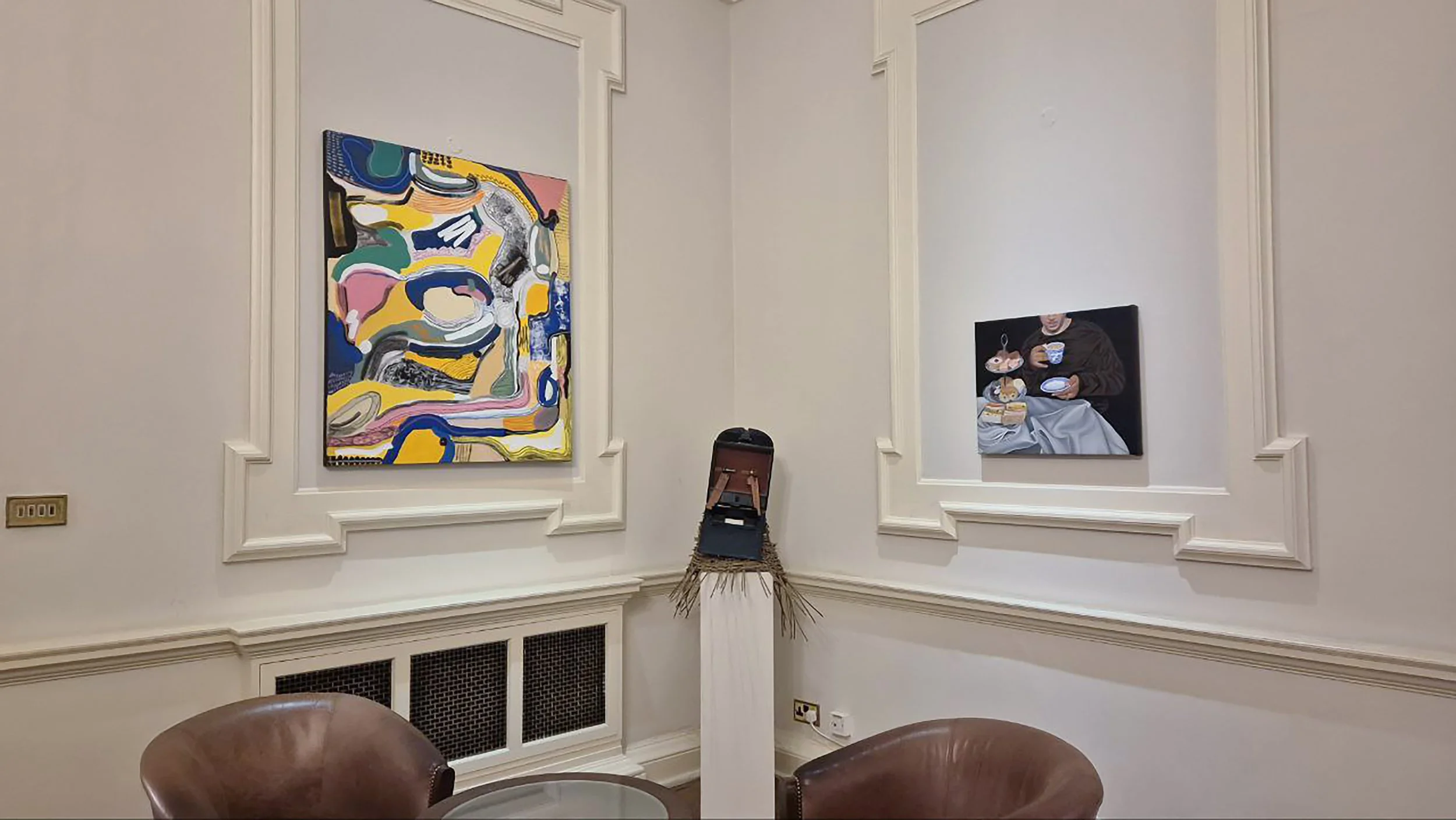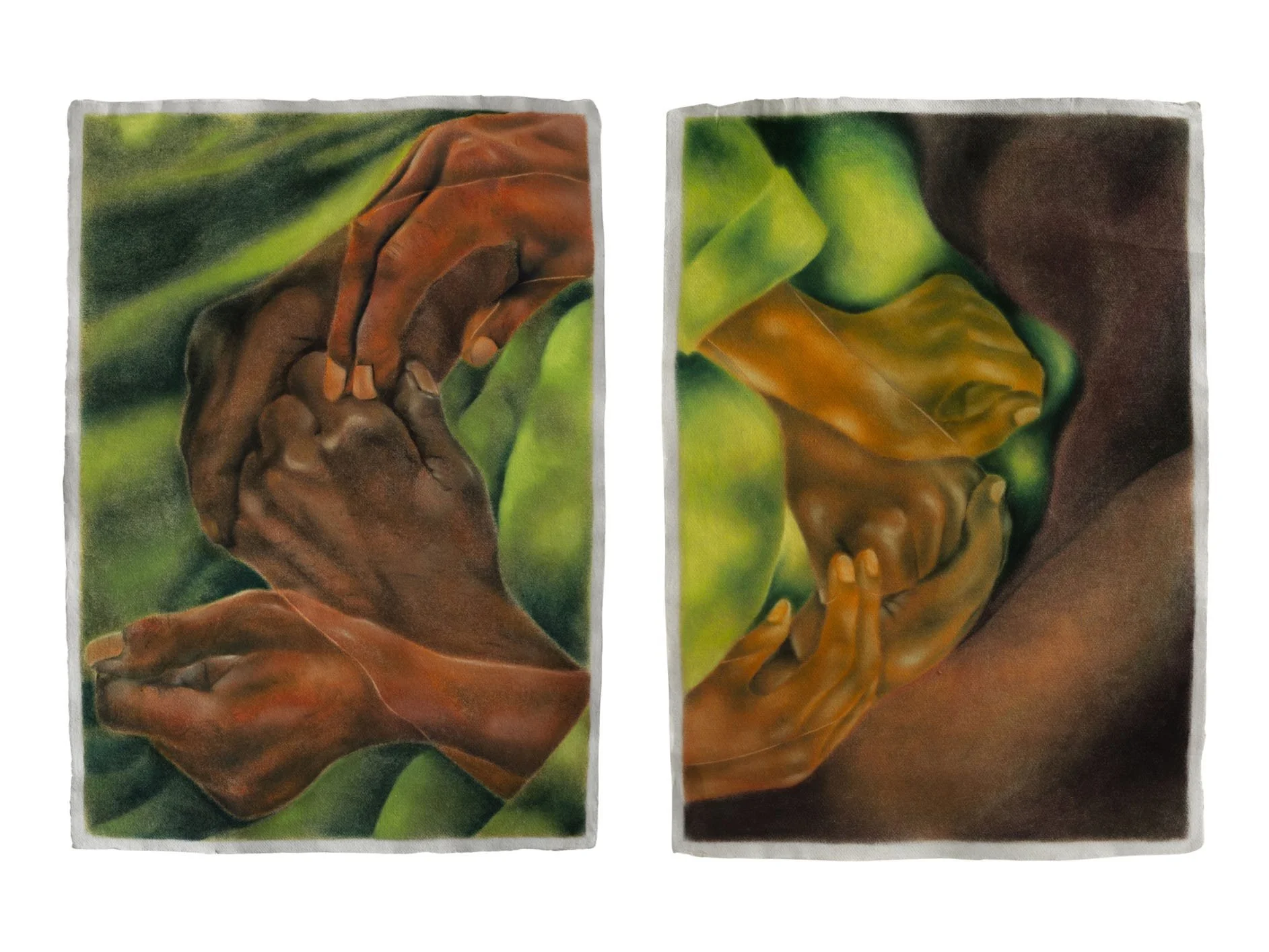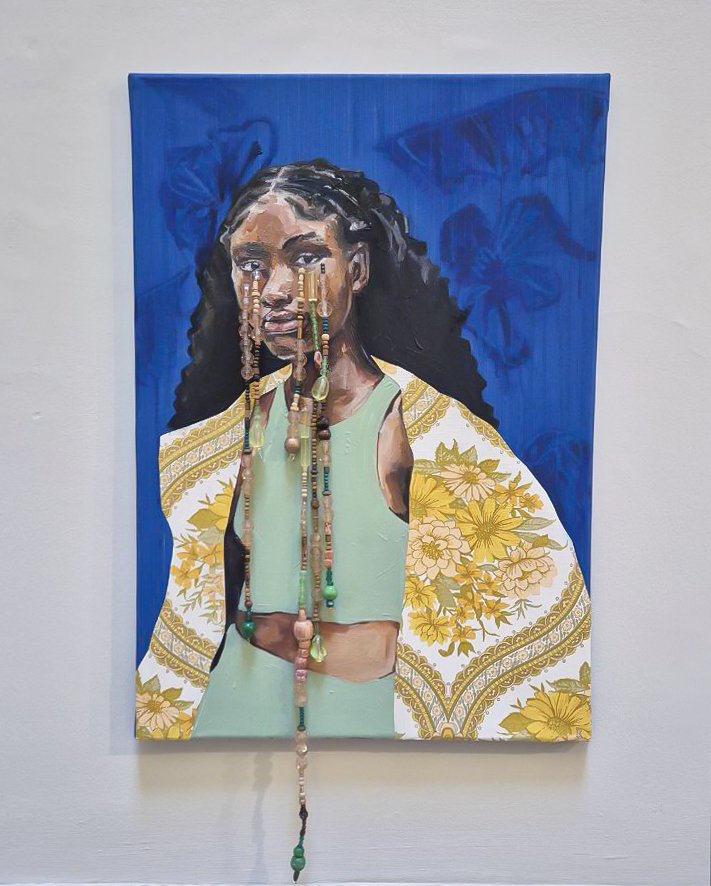Islands in the City, at Royal Over-Seas league
Open until 9th November, Islands in the City at the Royal Over-Seas League spotlights 22 Caribbean diaspora artists, bridging history and contemporary expression. Through painting, sculpture, and mixed media, the show reclaims space within a colonial setting and celebrates the resilience, identity, and cultural depth of Caribbean art today.
Islands in the City is a unique exhibition held at the Royal Over-Seas League (ROSL) in London, UK. Curated by Louis Chapple (founder of Studio/Chapple and arts curator at ROSL) and Sherece Rainford (founder of Gallery OCA), the show brings together 22 artists from the Caribbean diaspora, spanning islands including Jamaica, Dominica, Montserrat, Guadeloupe, Trinidad & Tobago, Grenada, the Bahamas, Puerto Rico, and the wider Caribbean. Each artist brings their uniqueness across multiple practices and disciplines including painting, photography, sculpture, collage, and mixed media. The exhibition emphasises themes of diaspora, memory, migration and creativity, positioning Caribbean art and heritage at the heart of London, while the setting of Mayfair—once a symbol of empire—forms part of its conceptual framework.
Founded in 1910 by Sir Evelyn Wrench, a Northern Irish entrepreneur, ROSL was established as a London club and a centre for international collaboration, culture, and conversation. The organisation continues to support emerging artists, as demonstrated by this exhibition, and fosters dialogue and public affairs initiatives. At the opening, we had the pleasure of hearing thoughtful remarks and strong interest in supporting the contemporary art scene from the High Commissioner of Jamaica to the UK, Sir Alexander Williams, and the High Commissioner of the Bahamas to the UK, Mr Paul Andrew Gomez. It marked a significant moment of recognition for the importance of Caribbean art.
Although founded to embrace the concept of Empire—a notion inherently tied to Britain’s colonial history—the club’s openness to all has evolved over time. Staging this exhibition within such a context challenges historical perspectives through contemporary anti-colonial discourse and the voices of a younger Caribbean diaspora. Placing Caribbean art within this space recalibrates and contests postcolonial ideas of identity and imperialism. It amplifies and deepens dialogues between cultures and across generations.
Caribbean art has always held an essential place in both history and art, beginning in pre-colonial times with the Taíno and Kalinago peoples (two major groups present in the Caribbean), whose artefacts and art carried religious and ritual significance. Before the mid-20th century, an institutional structure for art in the Caribbean had already been established through the Institute of Jamaica (IOJ), founded in 1879 to encourage literature, science, and art—a framework still active today. While local institutional recognition of Caribbean art began in the 1930s, it was through figures such as the Cuban painter Wifredo Lam in the 1940s that Caribbean art started gaining recognition in broader Western modernist institutions.
By the late 1960s, a major movement had emerged, laying the foundations for the new Caribbean artistic scene in the UK. The Caribbean Art Movement (CAM) was founded by poet Edward Kamau Brathwaite, novelist Andrew Salkey, and political and cultural activist, writer, and artist John La Rose. The movement welcomed artists who recognised the importance of Caribbean art and sought to develop a Caribbean identity in Britain rather than Black and British. Through conferences and meetings, CAM opened new discourses on Caribbean art and supported major literary and cultural developments until around 1972.
Today, we see a renewed surge of interest among collectors and galleries in Caribbean art, partly influenced by the growing demand for contemporary African art in the 2010s—notably marked by the creation of the renowned 1-54 Contemporary African Art Fair by Touria El Glaoui—and by the wider rise of Black art (a definition and/or immediate classification still debated today). TThis market movement encouraged attention toward artists of the African and Caribbean diasporas.
In 2021–22, a defining moment arrived with the exhibition Life Between Islands at Tate Britain, which brought Caribbean art decisively into the contemporary mainstream. Continuing this trajectory, Islands in the City situates itself within that lineage, contributing to a legacy that celebrates and cultivates Caribbean art. The show takes particular interest in the diasporic scene of London and the UK, exhibiting and proving the multitude of identities that are present within us and deserve to be celebrated. Through diverse media, the artists celebrate heritage, resilience, and the richness of Caribbean creativity. Their works embody what has been described as “the rootedness of each island culture and the expansive possibilities of transatlantic migration and exchange” — a beautiful continuation of the ideas that drove the creation of the Caribbean Art Movement.
HIGHLIGHTS
Roisin Jones
Roisin Jones is an interdisciplinary artist working across performance, video, installation, photography, sculpture, and archival research. Her practice explores how the body and memory function as living archives, preserving personal and collective histories. By examining cycles of care, transformation, and resilience, Jones’s work reflects on identity, belonging, and cultural memory. Through this exploration, she seeks to offer pathways for connection while confronting displacement and healing within communities.
For this exhibition, she presents a piece created during a residency in Jamaica that explored the role and importance of storytelling linked to water—its symbolism of identity and its parallels with the diaspora. In High Noon, Jones reimagines River Mumma within her realm, creating moments of intimacy between subject and viewer. River Mumma is seen not only as the ruler of Jamaica’s waters but as a living symbol of nature’s sublime beauty and enduring strength. Storytelling, a vital part of Jamaican culture and a key vehicle for transmitting heritage across the ocean, continues to shape the diaspora’s collective memory. The materiality of the work—jute recalling colonial history, Job’s tears symbolising water, a frame made from Jamaican wood, and a golden silhouetted frames representing rarity—enhances its depth. Altogether, the piece carries layered histories and stories while preserving beauty and mystery.
Lee-Roy Zozo
Lee-Roy Zozo is a visual artist who navigates between France, Guadeloupe, and the UK. Lee-Roy Zozo has a great fascination for wood, which he uses as his main medium. From carving, burning, and painting on it, the material goes through a series of transformations to create captivating and beautiful figurative and abstract paintings. The artist connects his use of material to expressions of energy and historical and cultural concepts.
In his work Bloom, Zozo depicts a young Black woman surrounded by a torrent of pink flowers. Painted on raw wood, parts of the surface remain unpainted, allowing the natural grain to evoke the subject’s skin tone. The work celebrates the beauty of Black skin, grounds the piece in cultural materiality, and underscores our connection to nature and heritage.
Natalie Charles
Natalie Charles (she/her) is a multidisciplinary artist examining personal archives and quiet intimacies. Moving between drawing, painting, craftwork, and animation, she explores the impact of overlooked moments through family stories, collected objects, and her ancestral connections. She builds soft, luminous worlds that invite the viewer to reflect on their memories and emotions through hers.
Her work Skifeee Fontasy Flim is rooted in familial archive — through recorded discussions, photographic documents, and her grandfather’s diaries, Charles’s work depicts intimate and soft moments of hands intertwined. She describes the works as gestures of how she felt as she watched him talk, switching between patois and English, an ‘internal negotiation between his body and mind’. The perspective places the viewer in his gaze, balancing fragility and resilience while conveying tenderness and intention.
Yvadney Davis
Yvadney Davis is an award-winning London-based painter celebrating her British Caribbean heritage and experience through colourful and textured portraits. Davis defines her practice as ‘a love letter to my working-class Black British Caribbean heritage’. Rooted in memory and belonging, her practice draws inspiration from her grandmother’s home — its textures, patterns, and cherished objects. Through paint and collage, she weaves personal and collective histories, combining gestural strokes, vintage materials, and folklore to explore identity and place. With a background in Fashion Design, she brings a sharp eye for form, colour, and pattern, creating works that bridge past and present while reflecting on resilience, home, and cultural pride.
For this exhibition, she expands her practice by incorporating beads, adding texture and dimensionality to her tapestry-like surfaces. In Sorrow SE22, Davis explores generational grief among women marked by migration and sacrifice. Inspired by her grandmother, the work evokes the withheld sorrow of the Windrush era—where silence was dignified and tears unseen. Here, sorrow is reframed not as defeat but as transformation, a necessary passage toward renewal. The piece honours the women who carried unspoken burdens and imagines a shift from silence to strength, from sorrow to joy.
This exhibition definitely marks a moment in Caribbean art through its concept and the choice of its location. It is clear that the diaspora is looking to fill a gap, or rather build a bridge with this triangular journey (from Africa to the Caribbean to the UK), and remains in constant curiosity and interest to make sense of the world we live in, our identity and our place within it. Diasporic communities in London and beyond highlight the enduring importance of these connections. Islands in the City beautifully translates this impulse to listen and reconnect across generations and geographies, reaffirming the Caribbean’s vital contribution to contemporary art and global cultural dialogue — this unbeatable urge to listen and reconnect in an international and intergenerational manner.
Dates
Until 9th November 2025
Contact:
Louis Chapple @studio.chapple
Sherece Rainford @sherecerainford @gallery_oca
Royal Over-Seas League @roslarts









